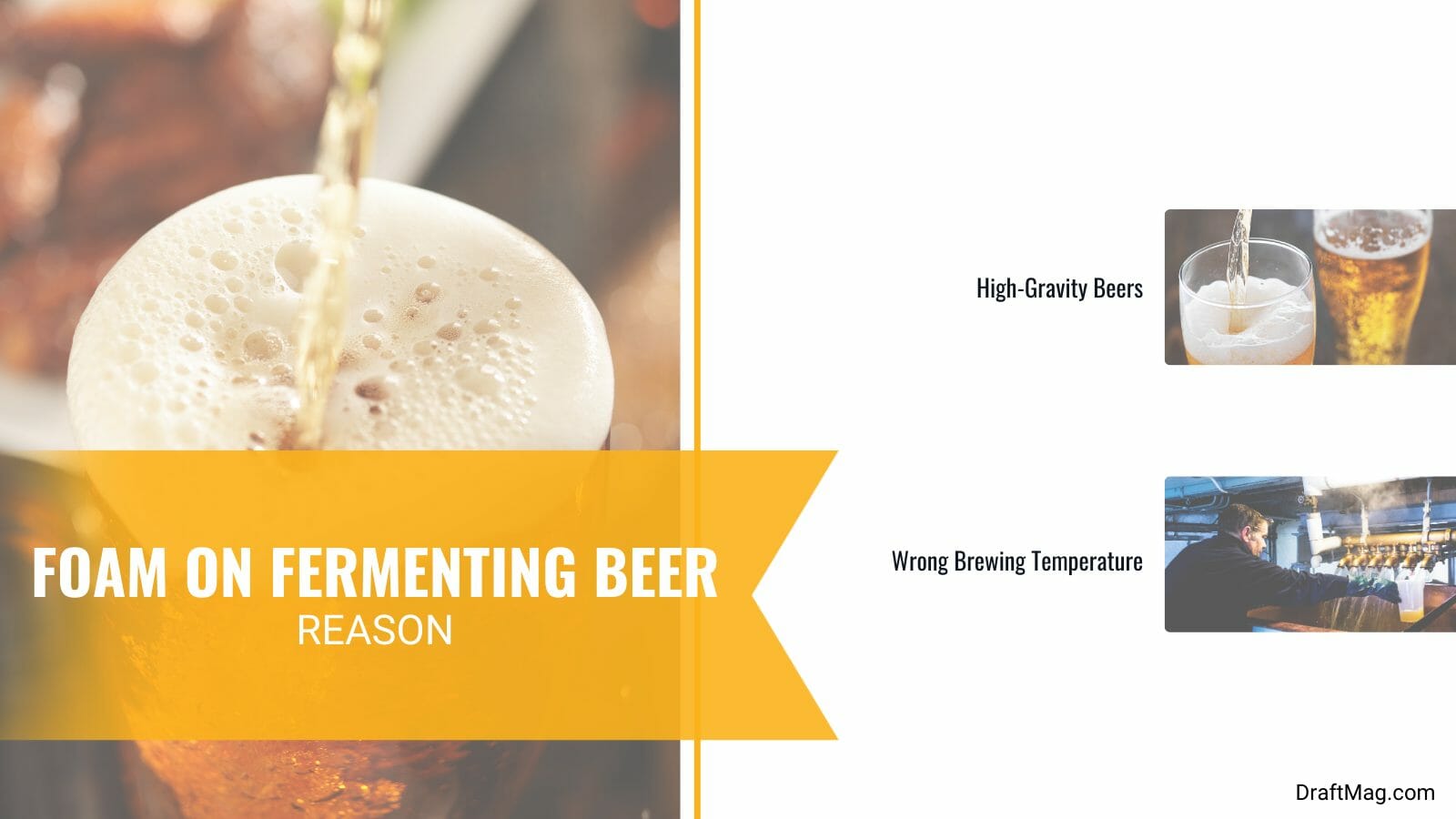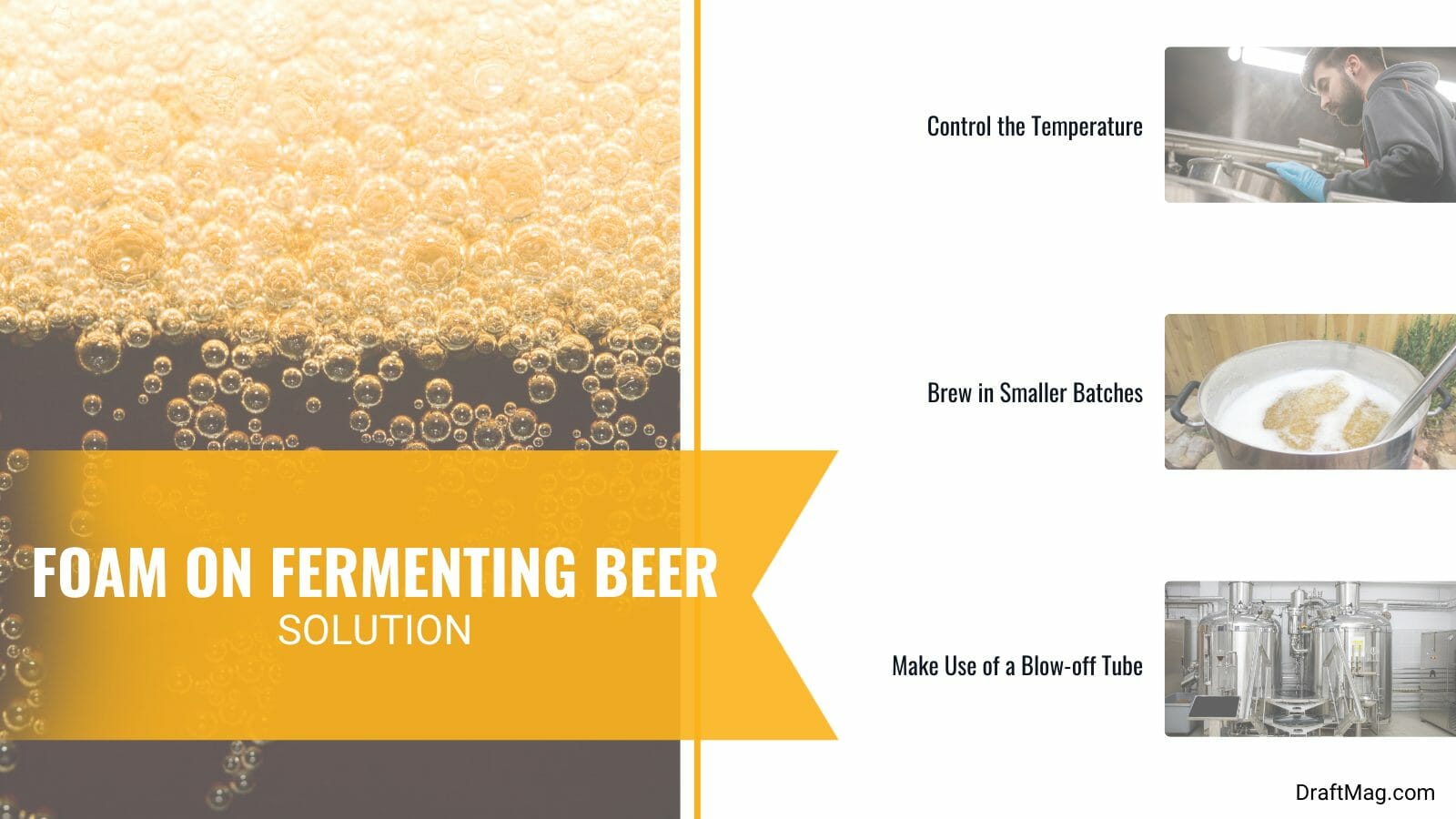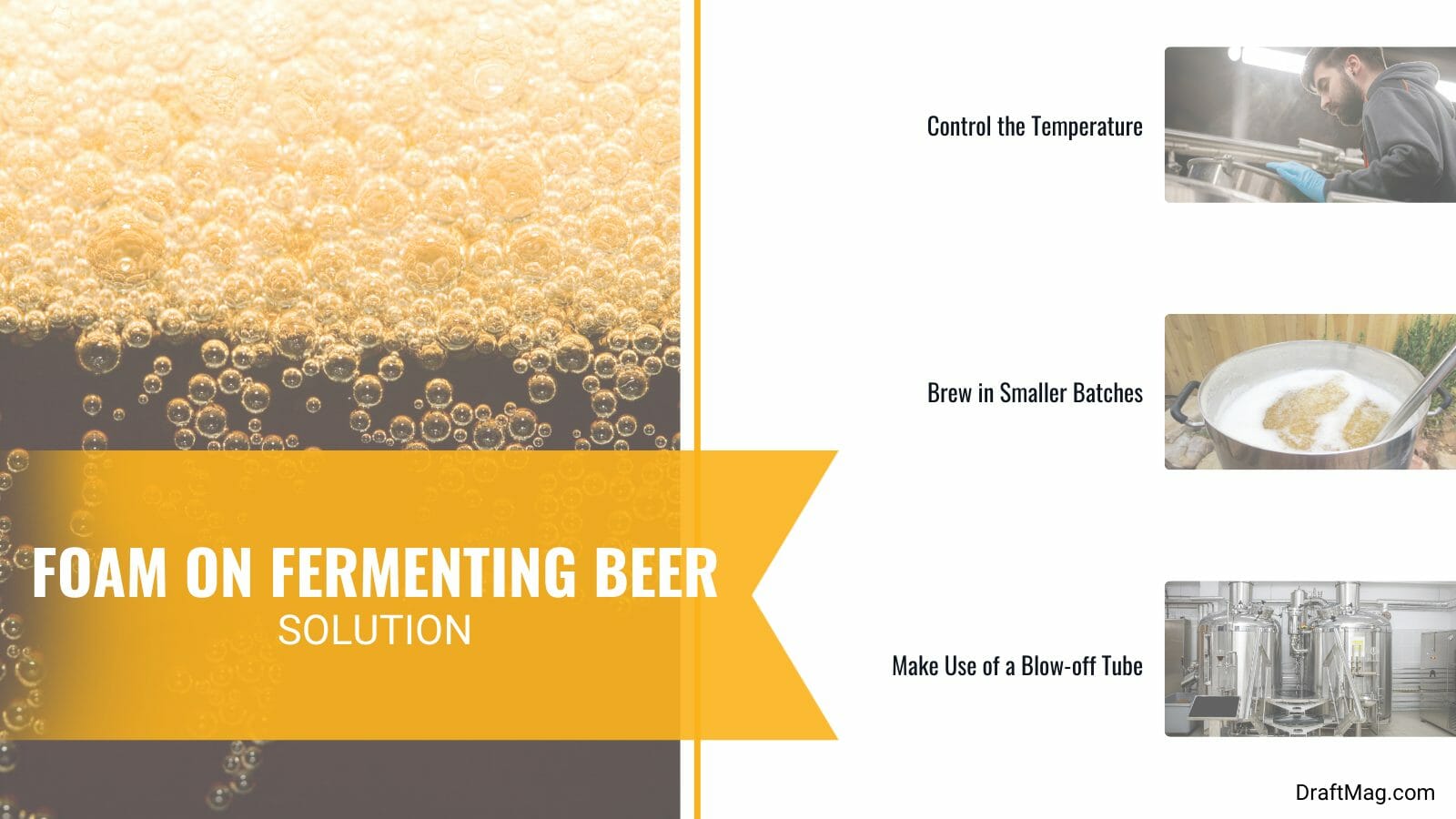Foam on Fermenting Beer: Causes and How To Deal With It
Foam on fermenting beer is meant to be a sign that fermentation is happening, but when it remains for too long and refuses to subside, it becomes a problem. With too much foam on your beer during fermentation, you can cause a blowout, which is a rather messy situation.

With this article, you will learn about the reasons why there’s a lot of foam on fermenting beer each time you homebrew and how to prevent it from happening next time.
Continue reading our guide on beer foam to know more.
Why Is There Foam on Fermenting Beer?
There is foam on fermenting beer because it is a byproduct of the fermentation process when making beer. The yeast turns sugar into alcohol, carbon dioxide, and foamy liquid on top of the wort during fermentation. This foam creation is called Krausen and is completely normal.
It is good to have foam on your beer, although this should be the natural foamy head that you get from a fully brewed beer and not an over-abundance of it. Foam on beer locks the carbonation into the liquid and improves the aroma and taste of your beer.

Foam on your beer is a sign that it is undergoing the fermentation process. But sometimes, the foam builds up too fast, and this prevents carbon dioxide from escaping. This leads to a lot of pressure, and it will eventually blow up. Knowing how to manage foam on beer during fermentation is important to prevent a blowout. Also, it is important to know how long the whole beer fermentation process will take to know when the foam might cause you issues.
– High-Gravity Beers
One of the causes of too much beer foam is a high-gravity brew. If you’re making a high-gravity beer, there’s a good chance that there will be too much foam. This type of beer has a high ABV, so it requires more work from the yeast to produce enough alcohol.
During this fermentation process, the yeast works hard to create a lot of alcohol, and this also leads to more foam. Eventually, there will be too much foam, and it can overflow during fermentation.
– Wrong Brewing Temperature
Another reason why you might have too much foam on your beer is the wrong brewing temperature. When you’re making an out-of-season beer, you might have trouble regulating the beer. Some beers are better made during the winter months, while others should be brewed during the summer.
If you’re making an ale, you need a brewing temperature of around 68 degrees Fahrenheit, but a lager ferments better in cold temperatures from 45 to 55 degrees. If you brew a lager and the temperature is warm, you will get overflowing foam on your beer during fermentation. The same goes for an ale that is brewed in cold temperatures.
How To Fix a Blowout of Foam on Fermenting Beer
To fix a blowout of foam on fermenting beer, you can try controlling the temperature, brewing in smaller batches, or making use of a blow-off tube. If you have too much foam on your homebrew beer, this will lead to a lot of wasted beer.

Unfortunately, there’s nothing much that you can do when the damage has been done. You’ll only have to clean the mess and salvage what you can. But there are different ways to prevent having overflowing foam on fermenting beer.
– Control the Temperature
You can prevent the problem of too much foam on beer during fermentation by properly regulating the temperature of the wort during fermentation. When fermenting a standard five-gallon wort, you might notice that the temperature increases by up to 15 degrees Fahrenheit. Yeast also works faster when the temperature is higher.
Due to the yeast, the foam will build up very quickly since the wort is warm. The warmer the wort, the more foam you have until it eventually overflows. So, you need to lower the wort temperature when fermenting beer so that you don’t experience a mess.
There are different ways to make your warm wort cooler during fermentation. You can wrap a warm cloth around the brewing vessel during fermentation to get rid of some heat. Some homebrewers also place their brewing vessel in a bucket of ice or cold water. For a less hands-on solution, brew and ferment your beer in a place that has air conditioning.
– Brew in Smaller Batches
Many homebrewers make the mistake of overfilling their vessels, and this leads to a lot of beer foam during fermentation, which eventually spills out. Even if you have a large carboy, you should brew in smaller batches to prevent a blowout of foam on your fermenting beer.
Most carboys have a capacity of up to 6.5 gallons, but you shouldn’t go past 5 gallons of beer. Regardless of the carboy you are using, there should always be 1.5 gallons of space left. This headspace gives room for the foam to form without blocking the airlock and causing a blowout.
As long as there are a lot of headspaces, you won’t experience foam spilling out of your carboy. If you accidentally make more beer than you expected, you might be tempted to add a little more wort to your carboy, but this can be risky and cause a mess. So prevent a blowout by making smaller batches.
– Make Use of a Blow-off Tube
You can avoid a fermentation overflow of foam when brewing your beer with a blow-off tube. Most carboys come with the standard airlock, and this is what causes an overflow of foam. When the foam builds up too quickly, it ends up blocking the airlock. This stops air from getting out.
Since there’s carbon dioxide in your beer during fermentation, the airlock allows it to come out. But, a blocked airlock will only lead to pressure building up in the carboy until it eventually blows. You can avoid this foamy mess during your brewing process with a blow-off tube.
You attach one end of the tube to the carboy and the other to another vessel. As foam forms on your fermenting beer, it flows through the tube and empties out into a separate vessel. Keep in mind that the empty vessel should be filled with a sanitary solution. By getting rid of the foam during fermentation, you can prevent a blowout.
You should remove foam from an actively fermenting beer when it becomes too much. If the foam exceeds the standard level, you can remove it with a blow-off, which pours it into a smaller vessel. Some brewers prefer to wait for the foam to fall, but it can overflow.
FAQs
1. What Do You Call the Foam on Fermenting Beer?
You call the foam on fermenting beer Krausen. Krausen is a foamy head that you find on beer inside a fermenter. It usually comes up when the yeast is very active and interacting with other parts of the wort. Krausen is a sign that your beer is undergoing fermentation.
2. How Much Foam Is Normal When Fermenting Beer?
The normal foam when fermenting beer can be as high as 5 inches. You can also have foam on a low level of half an inch, which is normal. It becomes too much when it surpasses five inches, as this can affect the airlock and eventually lead to a blowout.

Conclusion
Understanding why there is foam in fermenting beer, especially when there is too much foam, is easy now that you’ve read our detailed guide.
Let’s sum up the main points before you go:
- Foam is found on fermenting beer as a sign that it is undergoing fermentation.
- Making out-of-season beers or high-gravity beers leads to overflowing foam or a blowout.
- Checking the temperature and brewing smaller batches can prevent an overflow of foam on fermenting beer.
- A blow-off tube is the most efficient way to remove foam from fermenting beer and prevent overflow.
- The foam found in fermenting beer is commonly called Krausen.
After reading our guide, you can prevent a mess of beer and foam on your kitchen floor during homebrewing. Avoid wasting your beer by getting rid of the excess foam with our helpful solutions.






